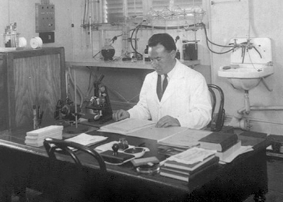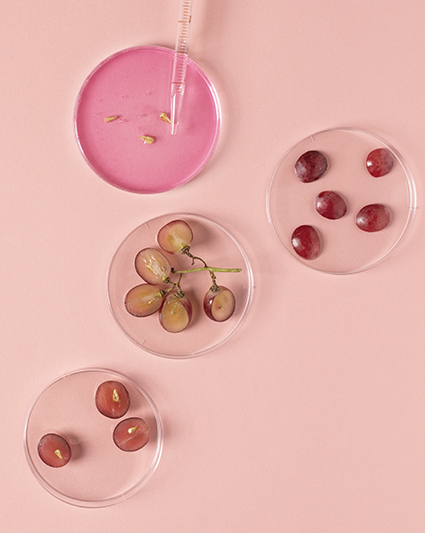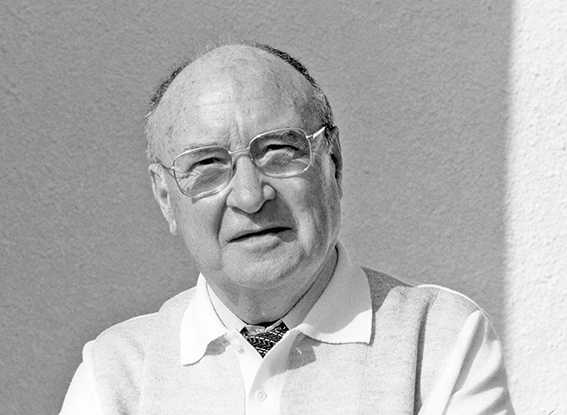OPCS are one of the most powerful antioxidants known nutritionally, but are often confused with other polyphenols, flavonoids, proanthocyanidins and grape seed extracts. So let’s break this very confusing category down, to understand what OPCs are and why they are so special.
Short for oligomeric proanthocyanidins, OPCs are a group of naturally occurring compounds with important health benefits.

Professor Jack Masquelier first discovered OPCs in peanuts while undertaking his PhD in 1947. He went on to identify OPCs in parts of many other plants, finding especially strong concentrations in the inner lining of French pine bark and in the membranes of grape seeds. OPCs are not one thing, they come in many different shapes and sizes. Throughout his career, Professor Masquelier researched what combinations of OPCs demonstrated the most profound benefits and studied their remarkable effects of on human health.
OPCs VERSUS POLYPHENOLS AND PROANTHOCYANIDINS
Proanthocyanidins belong to a much larger family called polyphenols and are chemical compounds that help protect plants. As you can see in the figure below, flavonoids are a sub-type of polyphenols, and proanthocyanidins are a type of flavonoid made up of flavanols. Proanthocyanidins are made up of flavan-3-ol units called catechins and/or epicatechins which bond together to form chains. Of all polyphenols, Professor Masquelier was especially interested in a small group of proanthocyanidins that he came to realise was of significant benefit to human nutrition. He named these OPCs, and due to their small size of only 2-5 flavan-3-ols units he called them ‘Oligomeric’ proanthocyanidins, or OPCs for short. ‘Oligomeric’ from the Greek word oligo, which translates to ‘a few’. He distinguished these from other proanthocyanidins with 6 or more flavan-3-ol units which he defined as ‘Polymeric’ proanthocyanidins or tannins. Professor Masquelier based his definitions on their bioavailability. Due to their smaller size, Oligomeric proanthocyanidins have high ‘bioavaliability.’ This means they are small enough to be absorbed into the bloodstream and used by the body. OPCs that are highly bioavailable have been found to have several health benefits that have far reaching effects on vascular health, collagen and elastin support and total body homeostasis.
OPCs are now defined by solubility rather than bioavailability. What this means is that while a range of OPCs are soluble, they may not be easily absorbed by the body and therefore have fewer beneficial health effects. The exact number of flavan-3-ol units which now class it as Oligomeric or Polymeric is not a precise number, rather the cut-offs is usually somewhere between 5 -10 units, as they gradually become less soluble (and less bioavailable). This is why most scientific studies of consequence on the health effects of OPCs since their discovery, have used Professor Masquelier’s more precise definition.
OPCs VERSUS TANNINS
One the other end of the proanthocyanidin size spectrum are tannins. Tannins are Polymeric proanthocyanidins and are much longer than OPCs. Because of their size, tannins cannot pass the intestinal barrier and are therefore not bioavailable. Which in regard to their relationship with proteins in the body is quite fortunate. Both OPCs and tannins have the ability to bond with proteins like collagen and elastin. But tannins bigger size makes their bonding so strong they can cause damage. OPCs bind more delicately and so do not damage tissue.
DIFFERENCES BETWEEN OPCs
As this figure shows, each OPC is made up of a single unit which is either a catechin or epicatechin, which are mirror images of each other. OPCs are formed when two or more of these units bond to form a structure or chain. Two units are called a ‘dimer’. Three 'trimers', four ‘tetramer’, and five, a ‘pentamer’.
Because there are two different types of starter units there are many different possible combinations that can make up OPCs.
Furthermore, OPCs are 3 dimensional and make different shapes. This happens because each link or bond between starter units (catechin or epicatechin) is located at different points on the starter unit.
This is why many different types of OPCs can be found in nature.

OPCs VERSUS GRAPE SEED EXTRACTS
While OPCs can be found in both grape seed and French pine bark extract, there are many other polyphenols also found in these substances. What grape seed and French pine bark extracts contain can vary greatly according to the varietals, geographical location and the extraction processes used in their creation. OPCs extracts often come from grape seeds or French pine bark, but the focus is on isolating the OPCs from those other polyphenols. The range of OPCs naturally present in the raw ingredient used varies and only very exacting extraction processes can identify them and extract them in precise ratios consistently. Professor Masquelier developed the first methods of extracting OPCs and was the first to do so on a commercial scale.
PROFESSOR MASQUELIER, OPCs AND CATECHINS
“According to Masquelier, catechins (and epicatechins for that matter) contribute to the effectiveness of OPCs. In their pure crystalline state, catechins are not soluble, but in the presence of OPCs, they become soluble”* and display notable beneficial effects. The Professors patented extraction processes were careful to include an optimal ratio of catechins and epicatechins to function effectively with OPCs.

PROFESSOR MASQUELIER’S LIFETIME ACHIEVEMENTS IN THE FIELD OF OPCs
Professor Masquelier spent more than a decade at the end of his life ensuring the continued availability of his life’s work. His OPCs extracts continue to be authenticated by the original company he created to ensure batch to batch consistency and quality of his original OPCs ingredients. Identified by the MASQUELIER’s® mark they are carefully extracted using the same proven techniques developed by Professor Masquelier and contain the precise combination of OPCs that he refined and developed throughout his lifetime.
TAKEOUTS
OPCs were discovered by Professor Masquelier. They are a particular type of proanthocyanidin (a subclass of polyphenols) and are found in a variety of plants.
• There are many different kinds of OPCs. They vary in both size and shape.
• OPCs exist in many different types of plants, in different amounts, ratios and sizes.
• OPCs extracts focus on extracting the OPCs content of plants.
• Polyphenol, grape seed and French pine bark extracts may contain OPCs, but they are present only in small unregulated amounts.
• OPCs are generally classed by solubility. Professor Masquelier’s original classification was based on bioavailabilty, and therefore their consequent value to human health. Most consequential scientific studies on their benefits use his definition of OPCs.
• Professor Masquelier spent his lifetime developing two ultimate OPCs extracts and exploring their effects on human health.
• MASQUELIER’s® Original OPCs and French pine bark are highly regulated OPCs extracts and are authenticated to be identical to Professor Masquelier’s ultimate extracts.
Click here to find products containing MASQUELIER’s® OPCs in your country
